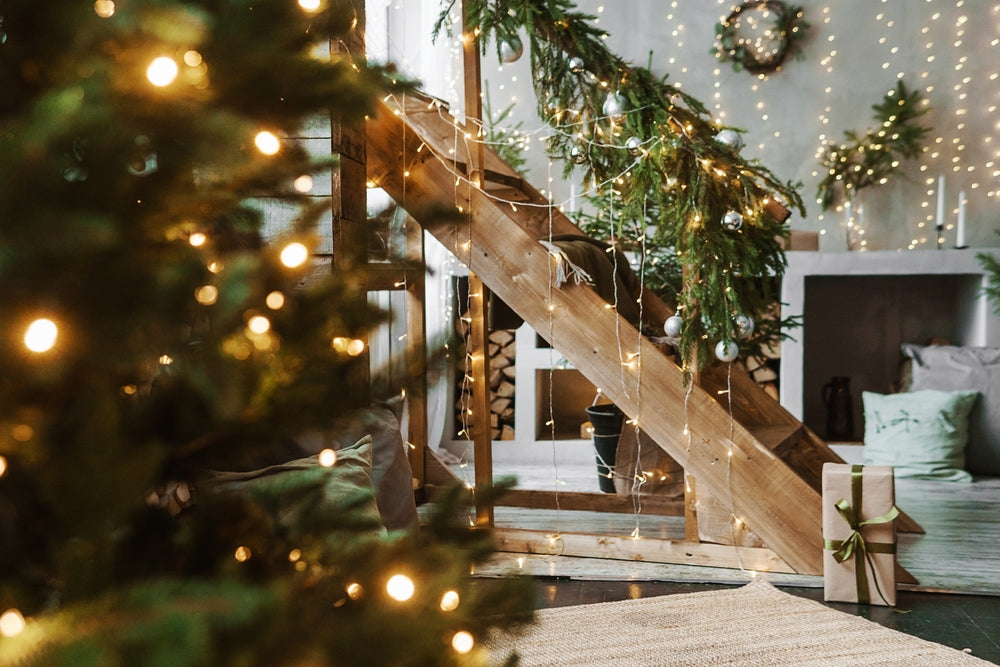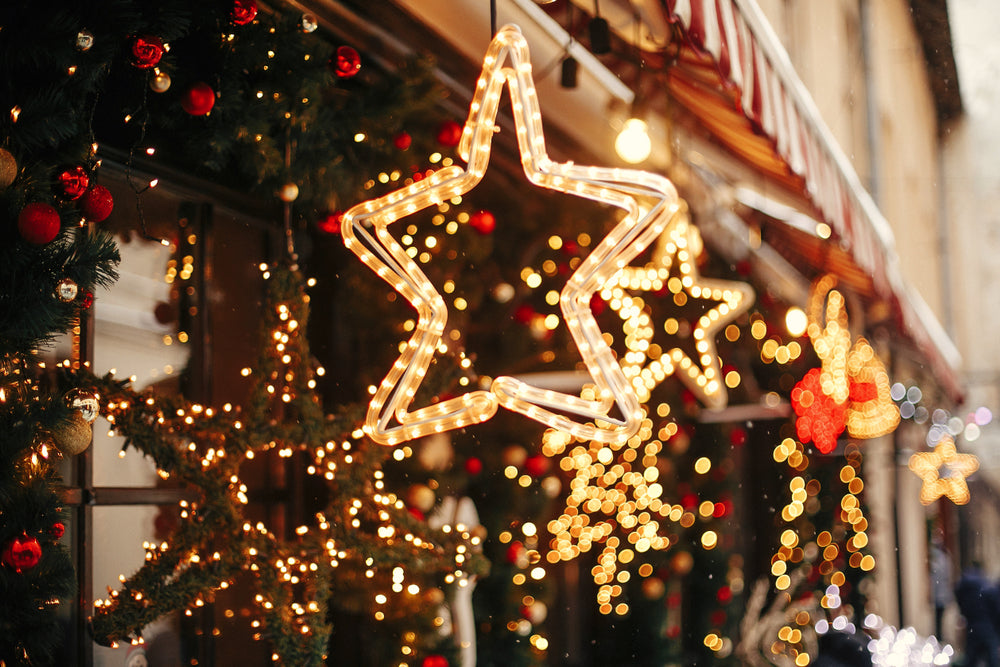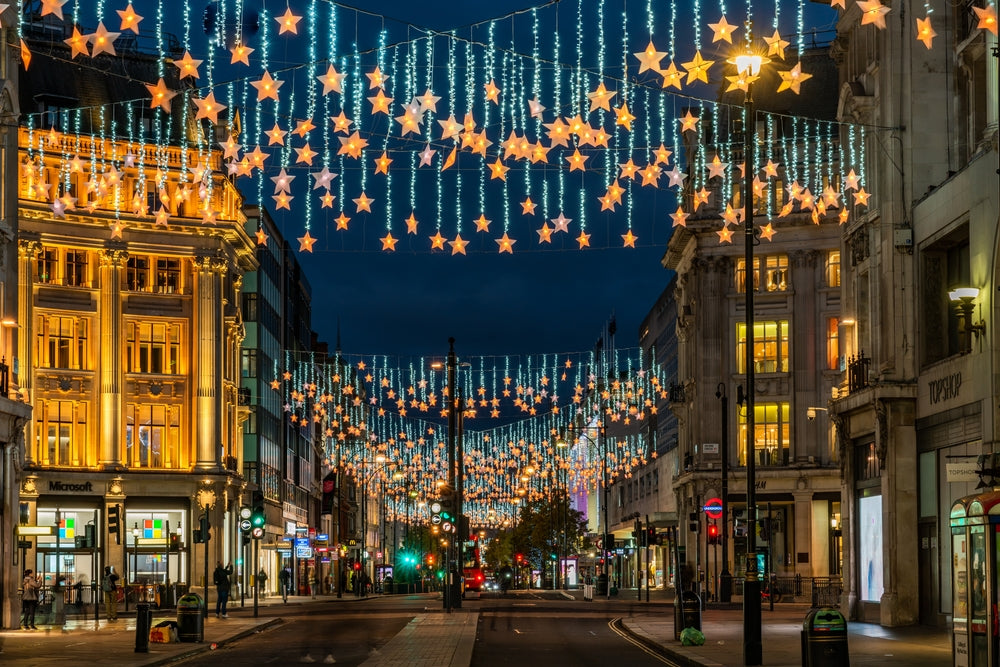Christmas lights styles, sometimes referred to as fairy lights, festive lights, or string lights, are lights that are frequently used for decorating in honor of the holiday. They are frequently on show during Advent and Christmastide. The tradition dates back to the days when candles were used to decorate Christmas trees, signifying that Christ was the light of the world. In early modern Germany, Christians carried Christmas trees into their houses. Getting into the Christmas mood may involve doing your Christmas shopping and decorating early, especially with Thanksgiving behind us.
There is a large range of high-quality Christmas lights that won't let you down, even though the latter chore frequently evokes images of burned-out bulbs, tangled wiring, and colors that just don't pop. Even some sets come with entertaining (and frequently useful) features like programmable settings and timers. Before the holiday season begins, there are many options to think about, including novelty lights, multicolored LEDs with varied modes to match your mood, small incandescent lights, vintage-style lights, and traditional string lights. Christmas lights have advanced significantly from the days of lanterns and candles. There are a wide variety of Christmas lights available today.
Different Types of Christmas Light Styles
Incandescent (Glass) Lights:
Incandescent lights are the earliest variety of Christmas lights. They are made of a tiny filament that heats up and glows when power is sent through it. Although they are quite cheap, incandescent lights generate a lot of heat and are not very efficient. However, many people still love their warm appearance. Glass string lights and bulbs with wires are an affordable option for modest installations, particularly for first-time light installers in the home.
LED Lights:
LED lights are quickly becoming the most popular type of Christmas lighting available today. They generate light as electricity passes through them since they are comprised of light-emitting diodes. LED lights are far more efficient than incandescent lights and generate little to no heat when in use. LED lights are also available in a wide range of colors and styles. There are two wiring options for LEDs: parallel or series.
Series circuits function by transmitting electricity from the power source, through each light, and back to the power source—so if one light burns out, all the lights after that will also burn out. In a parallel circuit, every light has its own circuit that powers it. If one burns out, it has no influence on the rest of the lights—and they're interchangeable. Although parallel circuits are advised to prevent having a half-lit tree, either approach is acceptable. LEDs frequently face criticism during the holidays since they don't emit the same warm amber glow as incandescent lights. Instead, they're more likely to be found in cool-toned alternatives with a faint, bluish color.
Bulbs and Cords:
C7 or C9 light bulbs are used in commercial Christmas cables. This type of lighting allows for complete personalization. The style, color, and chord color of the lights are all customizable. Round bulbs, which resemble candies along a roofline, are also a popular option in addition to cone-shaped lamps.
Mini Lights:
Mini lights, or delicate lights, are a common decoration for Christmas trees. There are two types of little lights: incandescent and LED. Although we value the diversity and robustness of LED string lights, we still adore the classic appearance of glass micro lights.
The classic "mini lights" consist of little incandescent bulbs placed into a plastic socket. Incandescent lights use a heated filament to produce light, and they are frequently available in a variety of colors. Despite the vintage Christmas feel these lights will provide, there are a number of problems you may have over time, such as burning out portions, flickering bulbs, and overheating. Aside from the issues of longevity and quality, incandescent lights are substantially more expensive to run than LED lights and demand more energy to operate. According to the US Department of Energy, LEDs use up to 90% less energy and last 25 times longer than typical incandescent lights.

Icicle Lights:
Icicle lights are long lines of lights that are made to look like icicles. These lights are a common way to decorate roofs and gutters. These have a traditional design and look great when combined with net lights of the same color.
Net Lights:
One kind of Christmas light that is composed of a mesh of lights is called a net light. The mesh is often knotted by hand. Net lights are frequently utilized to adorn expansive spaces, including trees and plants. We adore this kind of light for impromptu Christmas decor.
There are now many other colors of Christmas lights available, including clear glass, yellow, red, green, blue, orange, pink, teal, and purple. Pure white, warm white, and natural pure white are all available. Additionally, some Christmas lights have various effects, such as fading, blinking, and flashing. Whatever style you decide on, we adore that Christmas lights are a centuries-old custom that began with candles and has now—for the time being—landed on semiconductors. One aspect of the holidays that everyone looks forward to is seeing lights.
Types of Christmas Light Styles Power Sources
Christmas light power sources include solar energy, batteries, and electricity. You may choose the greatest kind of power for your needs by considering your preferences, setup needs, and budget.

Plug-In Lights
Plug-in lights are probably the first thing that comes to mind when you think about Christmas lights. This kind of light can remind you of the time you spent repairing Christmas lights and searching along a lengthy light string for a burned-out bulb. Electricity powers plug-in Christmas lights. You'll need a nearby power source or an outdoor-rated extension cord to utilize them. One advantage of plug-in lights is that you won't have to be concerned about running out of batteries or your solar power running out. Plug-in lights, however, require a backup power source to function during a power loss.
Battery-Powered Lights
Consider employing battery-operated Christmas lights if you're planning a light display in an area where electricity outlets aren't available. Battery-powered lights are also ideal for situations where wires could provide a tripping hazard or when you wish to conceal the power source, such as when lighting a Christmas wreath on an entry door. The number of lights on the strand, the type of lightbulb (LED or incandescent), the quality of the battery, and other elements can all affect how long battery-operated lights last. Some gadgets just need new batteries after a few hours, while others might last for more than 100 hours.
Solar-Powered Christmas Light Styles
For holiday decorations, solar-powered Christmas lights provide a more environmentally friendly option. These lights run entirely by solar power via a connected solar panel, saving money on electricity. The cost of solar Christmas lights is typically comparable to that of their plug-in equivalents, if not less so. But, the lights might not last as long at night if the included solar panel is placed in the shade or receives insufficient sunlight on a gloomy day. The separate solar panels on each light string may cause congestion on your lawn if you're planning a big display.

Extra Christmas Light Styles Features
There are add-ons for Christmas lights that increase the number of color and function possibilities. There are dimmable sets, some with several brightness levels, and those with multiple lighting modes. You can choose slow fade one day and twinkling the next. They also have sets designed expressly for covering bushes and shrubs. As well as solar- and battery-powered versions if you wish to hang them out of easy reach of an outlet. If you intend to decorate your entire home or property, check for alternatives that include remotes and timers, as well as end-to-end connections so you can operate more than one set at the same time.
LEDs consume less power than other light sources, so you may connect numerous strings together to make visually stunning displays without overtaxing your circuit. Incandescent lights cannot manage the same number of connections and frequently require more than one wall socket. To find out how many lights can be strung together, please consult the product information provided by the manufacturer.
Conclusion
Christmas lights are a great way to spruce up your house for the holidays, but whether you hang them outside or inside, it's important to pick the right kind for the job. Outdoor lights are designed to be more durable in order to survive weather changes such as rain or snow. It is possible to use Christmas lights in damp weather because the majority of them that are currently available are certified for both indoor and outdoor use.
If moisture seeps inside the bulb, it can create rust or corrosion, which can reduce the bulb's lifespan. Choose "professional-grade" string lights instead of less expensive ones to prevent this, as they have a single, water-tight bulb and socket. Check out this article for more information.Visit the lighting collection page of our website for more information.










